Back in early Spring we viewed a house that had great potential, but needed a a lot of modernization. It’s biggest selling point was it had an enormous garden with a ready made plot for vegetables and even an orchard filled with berry bushes and fruit trees. It really was our dream garden, and we could picture ourselves happily spending sunny days picking cut flowers and homegrown produce, sipping white wine on the terrace whilst admiring the view of the hills in the distance. The house had belonged to an elderly couple who had put their heart and soul into the garden. We would have loved to have taken it on and to honour their hard work, but knew deep down that we simply couldn’t take on a house that had so many problems. It would have financially broken us, so we had to let it go. It made me realise though how important having an outdoor space is for my emotional and physical well being.
(pictures above of our old garden back in Leeds taken last summer)
Our little garden back in Leeds was a place that I cherished, spending as much time as possible. I grew herbs, wildflowers and perennials in raised planters, along with a few vegetables. I also had around forty plants in containers, including several very large, heavy ones for mature shrubs and other smaller pots for annuals like geraniums and pansies. Knowing that our belongings were going into storage for the move, and how heavy and large some of the containers were, I had to make the hard decision to leave my plants behind. The number of pots we had would have filled a removal van by themselves. Some I chose to give away to friends that I knew would take care of them, but the majority were left as part of the house sale. I hope the new owners have remembered to water them.
The house that we bought and now live in has a small front garden and a larger back garden. The front garden had two (supposed) dwarf conifer trees planted in the ground that had grown so large that they blocked all of the light in the living room. We knew they had to be removed so we could improve the soil and see the view of the hills from the window. We discussed it with our next door neighbour who was delighted that we were getting the trees taken down as they also blocked her light and sucked a lot of the moisture from her adjoining garden. We found a great local tree surgeon who took the trees down to ground level, and then we spent several days digging out the straggly root system left behind by the conifers. Most people who passed by stopped to welcome us to the neighbourhood. Everyone we talked to was a keen gardener, and they were so pleased to see the trees gone and that we were planning to plant shrubs and flowers instead. Back in our street in Leeds we could have been burying a body and nobody would have asked what we were up to!
Several of our neighbours invited us to look around their gardens. I was green with envy at the beautiful flower borders, vegetable beds and greenhouses filled with ripening tomatoes. We were told that the soil was the best anyone had ever worked with. Our lovely next door neighbour has a greenhouse that his late wife used to fill with seeds and cuttings, but it sadly didn’t get used anymore. He has very generously offered it to us for next year so we can grow some tomatoes and peppers. We feel very lucky to have such overwhelming support from our neighbours especially after years of having horrible ones. Everyone we talked to had of course viewed the sales listing for our house online and wondered what we were going to do with the back garden as they all hated it. Why? Well, sadly the previous owners had ripped out the lawn and the shrubs and replaced them with hard landscaping and astroturf. The fence had been painted battleship grey and there were a couple of wall planters with dead heathers and herbs in. There was no sign of any wildlife, the birds and butterflies simply flew past us on to other more welcoming gardens. To put it simply, it was bleak.
When we viewed this house back in the Spring, we didn’t worry too much about the garden. We didn’t like it, but we thought we could easily fix it by adding raised beds and pots, much like we had back in Leeds. We didn’t think it would be too long before the garden was filled with colour and scent once again. June was a hot month here in the UK, rainfall was minimal, if non existent. We were busy working inside, unpacking, painting and repairing things we felt needed doing urgently. There wasn’t much time for gardening. My Mum gave us a lovely ceramic pot so I caved and bought one plant to put in it, a small alium. That one plant brought me so much joy as I watched the buds open to flowers, and the bees swarm to it. July arrived and along with it heavy rain. The garden once again remained untouched, but this actually turned out to be a blessing in disguise as the inclement weather exposed a big problem we weren’t aware of. The porcelain tiles sloped towards the house and as no drainage channels had been put in, there was simply nowhere for the rainwater to go other than under the kitchen door. We had no other option than to remove the tiles, dig down and reverse the slope.
Having never had porcelain tiles in a garden before, we naively assumed they would be similar to natural stone or patio slabs. After a little online research, we discovered that the opposite was true as rather than sitting on a bed of sand, these were fixed down with a special mortar mix and laid on top of hardcore. Once we lifted a tile, we discovered the hardcore was about 10 cm deep and we were going to have to break it all up to remove it. We invested in an SDS tool system, which is basically a heavy duty hammer, chisel and drill. It’s a noisy piece of equipment, almost like using a jackhammer, so we routinely warned all of our neighbours when we intended to use it.
After we had removed all the tiles and hardcore from outside the kitchen door, we had a rethink about what we were going to do with the upper tier of the garden. Realizing that we couldn’t sit raised beds on top of the tiles as there was no drainage, we made the decision to just keep going and lift more of the tiles and hardcore. By doing this, we could hopefully dig down, hit soil and create new flower bed areas.
It took weeks of lifting the heavy tiles, drilling and chiseling out the hardcore and transferring the rubble into heavy duty sacks for disposal. It was back breaking work and we ended up with over 200 sacks of builders waste. We found a fantastic local waste removal firm who took everything away and left everything nice and tidy too. They also have a policy of donating any item that can be reused, so they took the plastic grass and passed it on elsewhere.
We’ve made it our aim to reuse as much of the waste as possible. We built a small wall in the front garden to edge the path using the bricks that previously surrounded the plastic grass. We’ve installed a summerhouse and relaid some of the porcelain tiles to create stepping stones outside the kitchen door and for the base that the summerhouse sits upon. The other tiles have been collected by a friend of our neighbour to use for their new patio. The grey gravel has been utilised in the drainage channels we’ve added outside the kitchen door. Everything now drains freely and we’ve no more issue with flooding.
Once the garden was clear of all the rubbish, we were able to dig down into the areas where the tiles had been removed. Amazingly, once we hit the soil we found it to be rich and alive with worms. Nature found a way to survive the motorway that had been built on top of it.
It’s difficult to see in the photograph because of all the mud, leaves and frost, but we now have three flower beds, one in front of the summerhouse, one to the left where the bird table sits, and a smaller one on the bottom right of this picture. We’re planning to build two or three raised beds on the right hand side so we can grow a few vegetables and cut flowers. For now, we’ve added some freshly rotted manure and we’re allowing the soil a few months to settle and the worms to do their thing. We still have a bit of hard landscaping to finish, like filling the areas around the beds and the pathways with golden gravel. We’ve bought a beautiful corten steel water bowl that helps to provide water for wildlife, and I’ve added several feeders for the birds to feast upon over the winter. Simply by adding a water and a food source, the birds have returned in great numbers and I love watching the robin in particular take a drink from the water bowl. The garden is a bare canvas, but I’m excited to think about what it’s going to like this time next year. Hopefully it will be full of pollinator friendly plants to encourage more biodiversity.
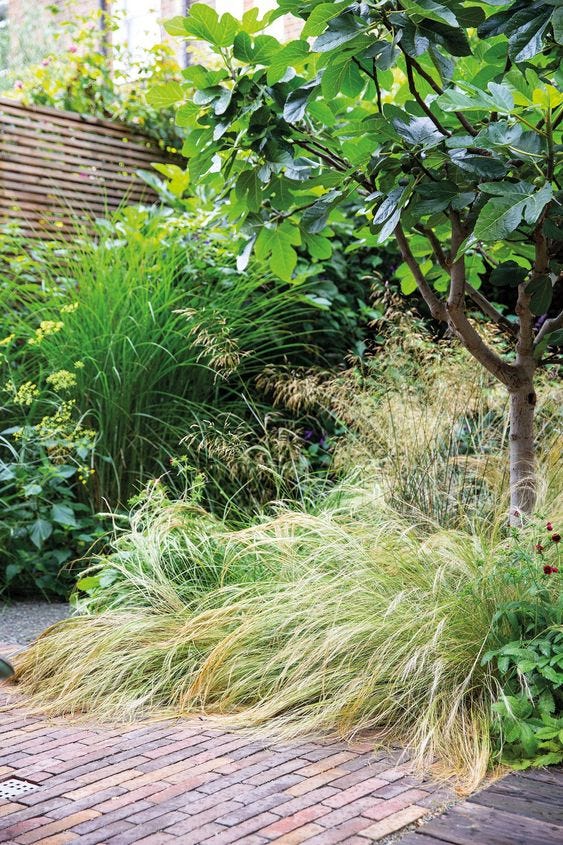
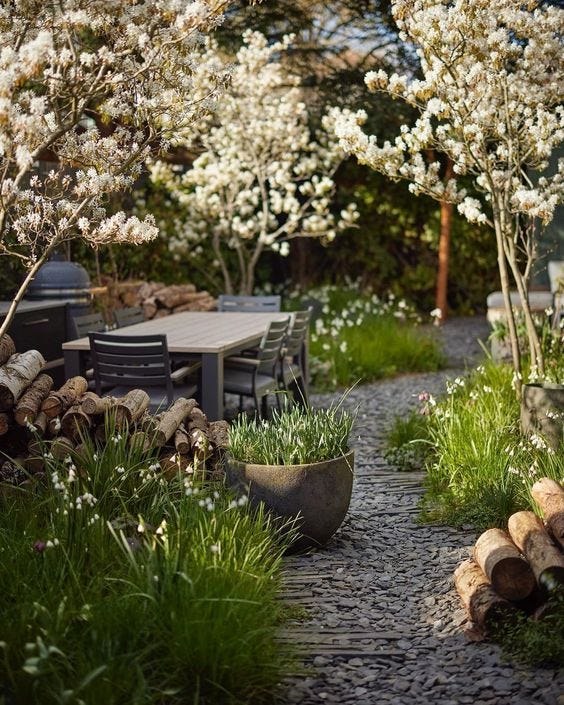
I’m a huge fan of Ula Maria and Stefano Marinaz’s garden design accounts on Instagram. Both of these incredible designers have a way of softening hard landscaping with perennials and grasses, whilst encouraging wildlife to flourish. So I’m spending winter reading and learning more about the types of plants that will do this as well as trying to understand what will flourish in our little corner of Scotland.
Thanks for reading and I do hope you will enjoy coming along on our new garden journey.
Jen x






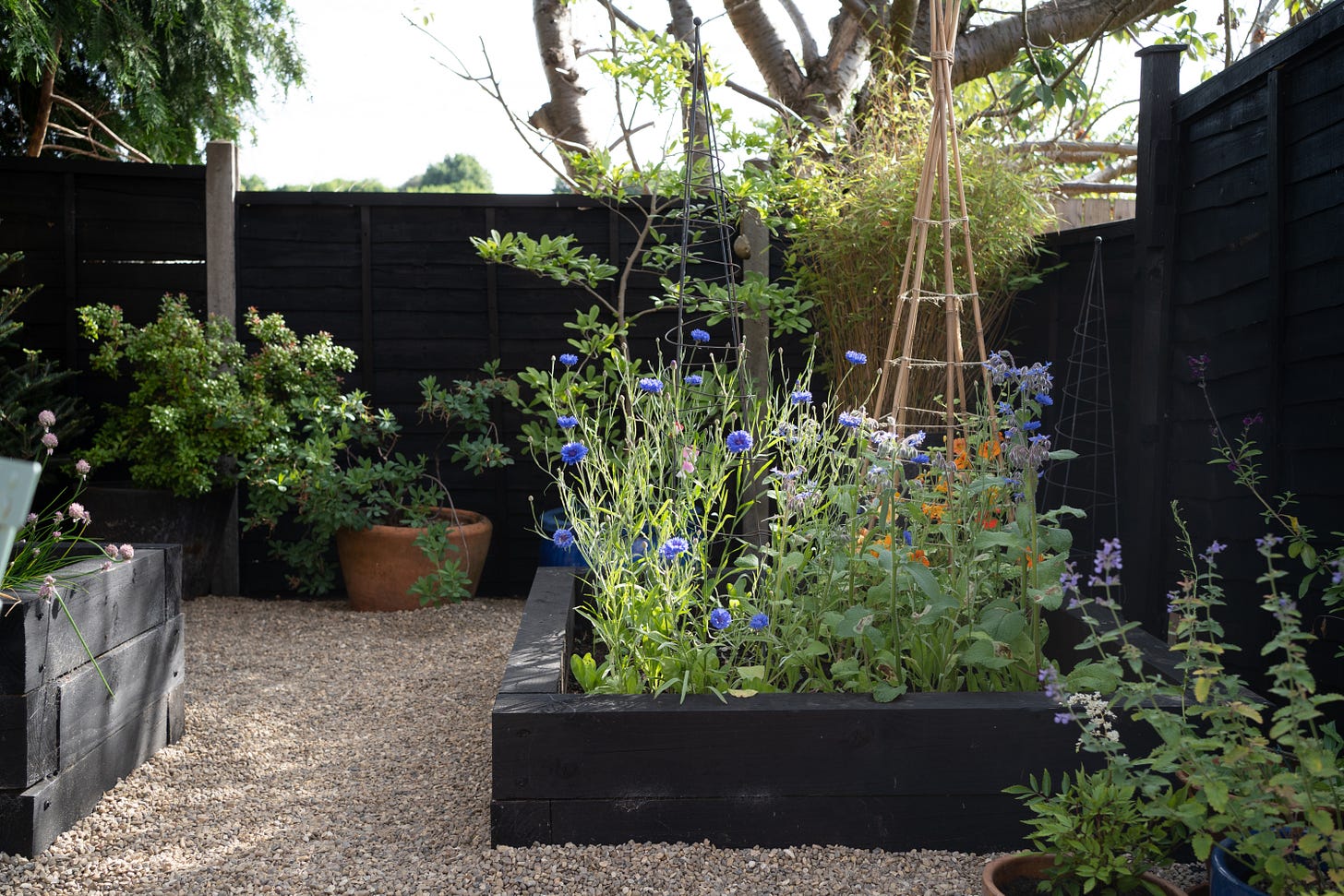

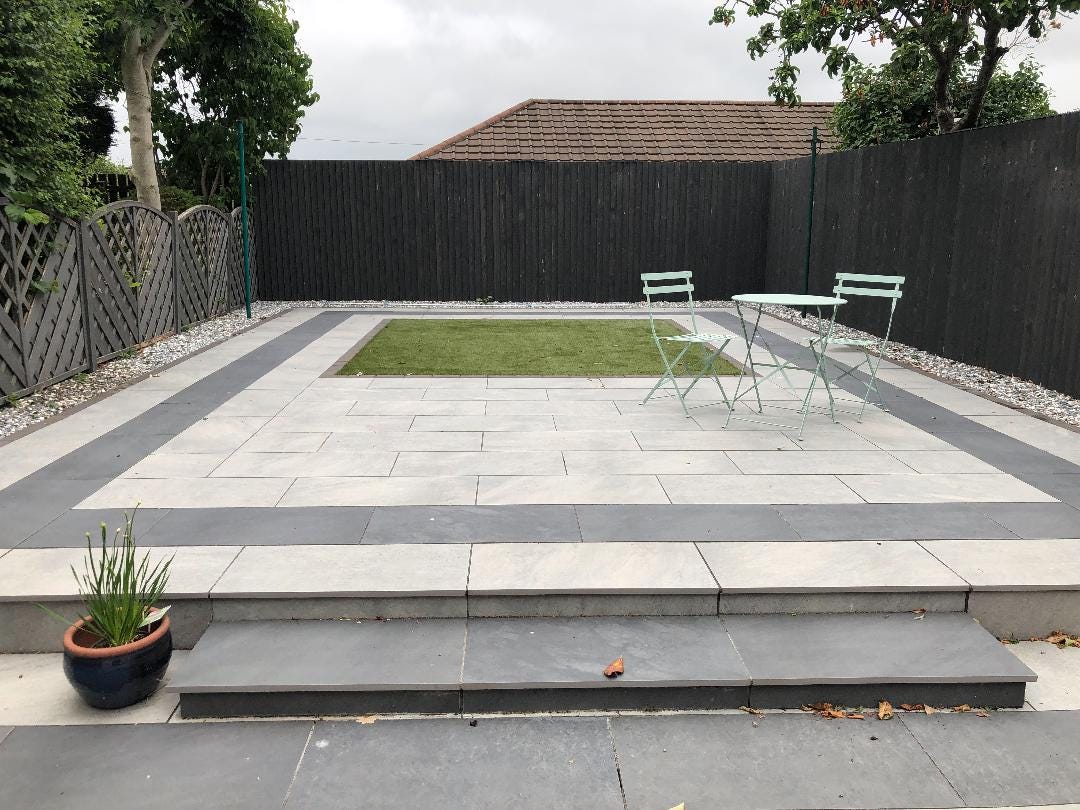


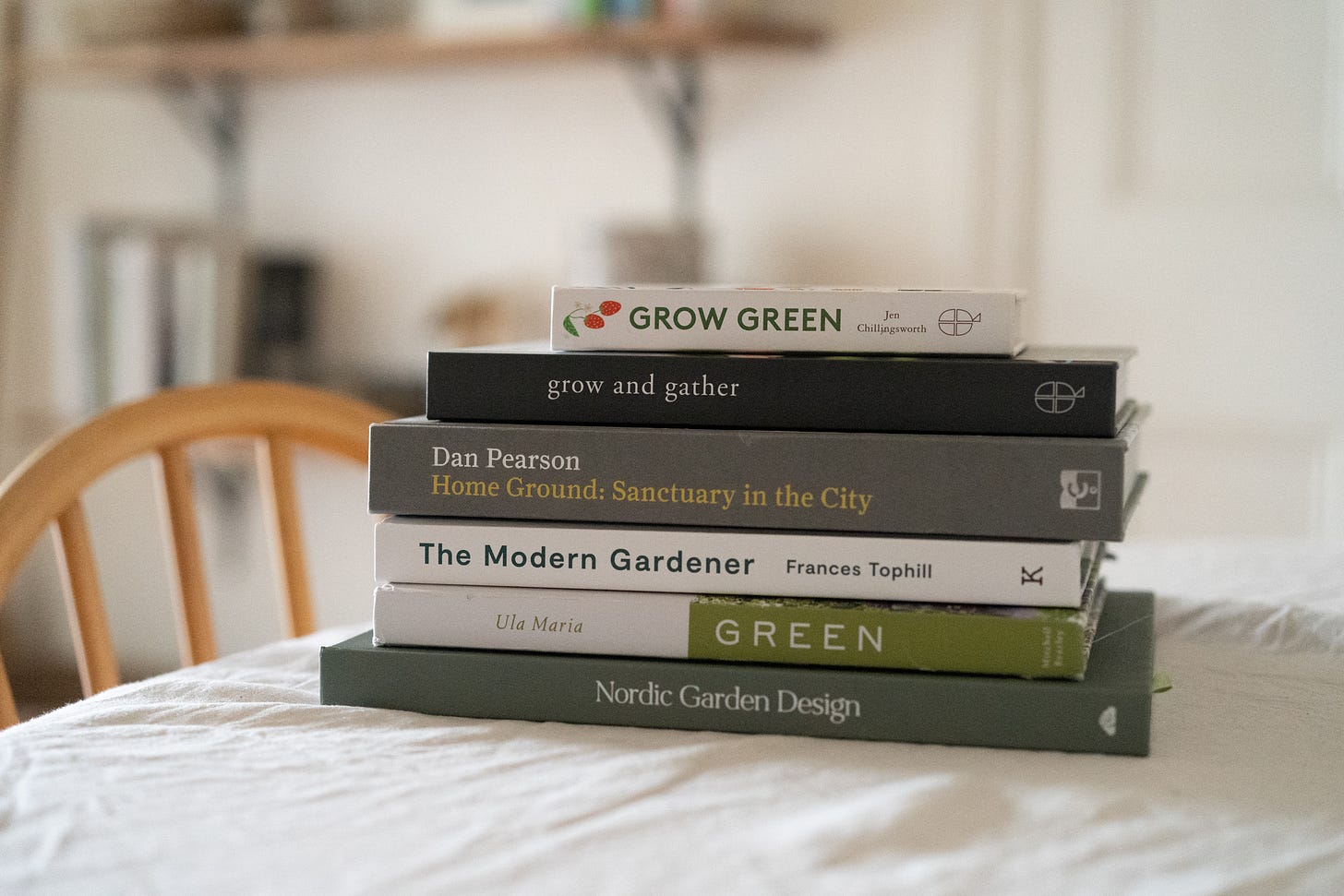
Great job! Back breaking work... must be great to see that part finished!
Really interesting Jen. Would love to share ideas & have long chats about perennial plants, vegetable growing , raised beds & all things gardening. Let’s definitely meet for that coffee soon 🥰